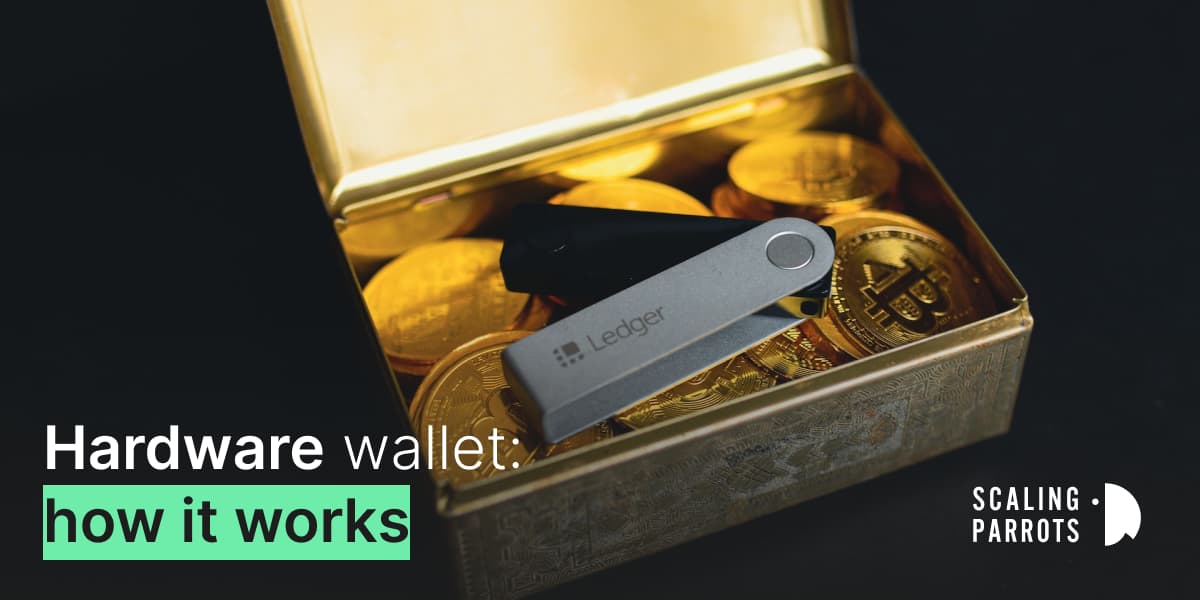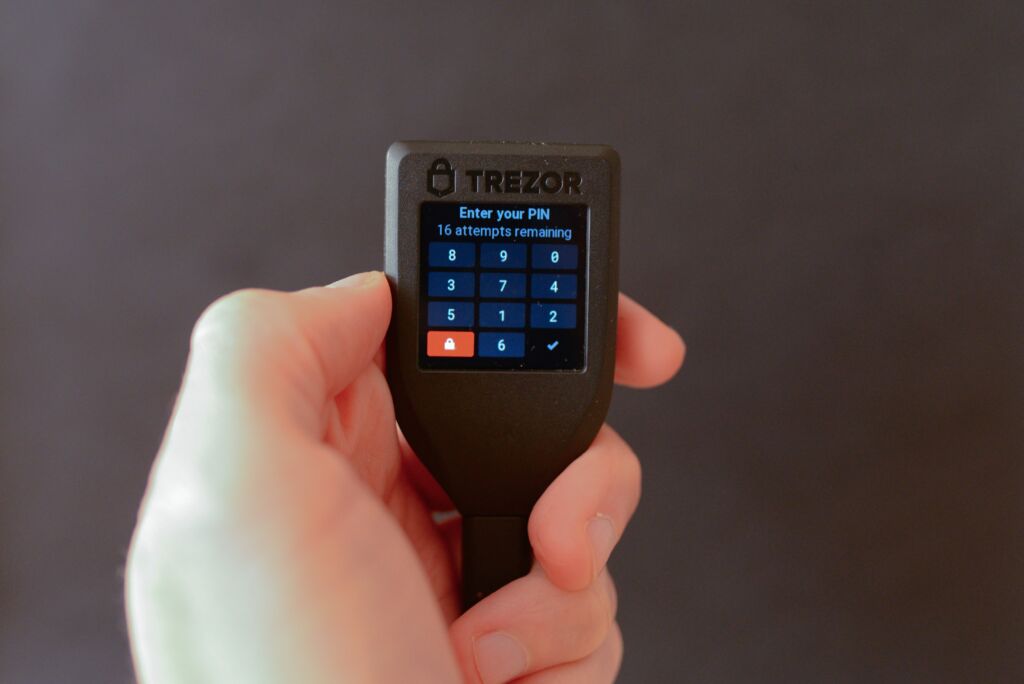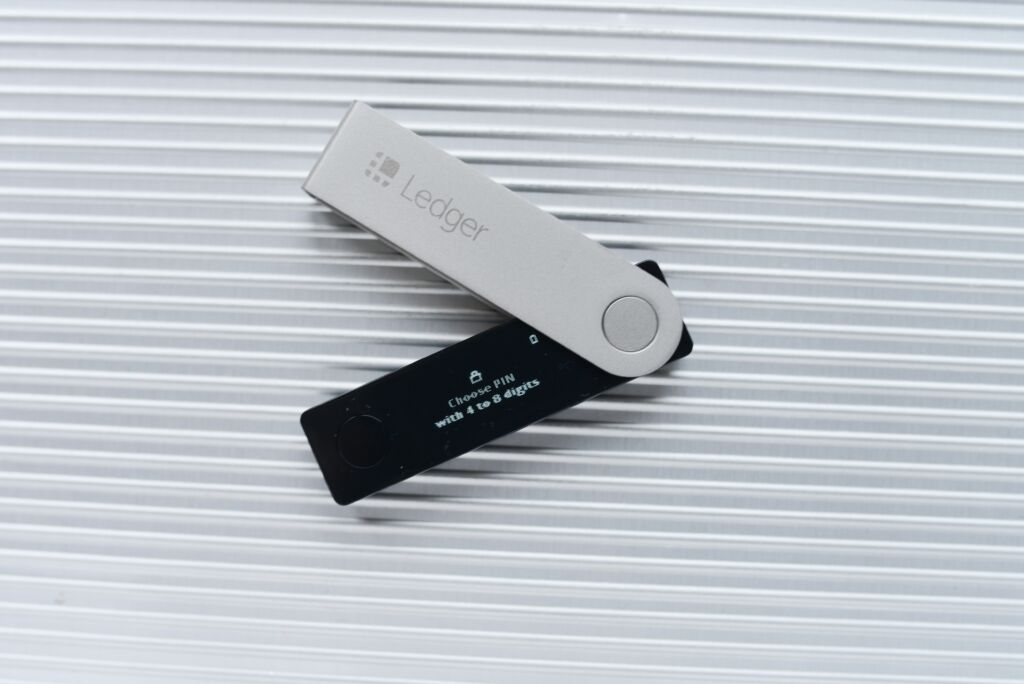
As the cryptocurrency sector grows in popularity, so does the total number of investors. For many investors, the question of which wallet best fits their needs becomes a matter of serious concern.
In the case of wallets, a rough distinction can be made between cold storage and hot storage. When cryptocurrency is kept in hot storage, it is kept on a device with an internet connection. The wallet is simple to use and built for regular use. The hot wallets are classified as online, desktop, and mobile wallets.
A cold wallet is the opposite of a hot wallet. A cold wallet is offline and so has no Internet connection. These wallets are primarily meant for huge investment sums and to reduce the danger of cybercrime. The so-called paper wallet is a popular cold wallet in which the private key is written down on paper. So, hardware wallets fall into this category as well.
This article will discuss what hardware wallets are, how they work. some examples of hardware wallets, and their advantages and disadvantages.
What is a hardware wallet?
Hardware wallets are physical devices that securely store your private keys on a device that is not connected to the internet. The wallet only holds the Blockchain addresses, not the currencies themselves.
Hardware wallets exist in various forms and sizes, but the look of a regular USB stick is trendy. Well-known representatives are talking about the Trezor and the Ledger Nano.
With a hardware wallet, the provider’s reliability must be assured because he is responsible for the device’s overall security. Furthermore, experts advise only purchasing new goods because used ones might be exploited.
There is also a recovery method because external factors can damage or destroy the hardware wallet. The backup of the wallet is essential here, so keep this information safe.
Hardware wallets are designed to keep private keys offline, while online storage, such as on a computer or smartphone, is more vulnerable to hacker attacks.
Storing the private keys offline is more secure since hackers would have to steal your cryptocurrency hardware wallet to obtain access to the private keys. Even yet, most hardware wallets require a PIN for entry, which adds another layer of security. The private key is likewise kept on a particular security chip and cannot be retrieved.
As a result, you should always keep your Bitcoin or cryptocurrencies’ private keys offline.
When you leave the storage of your Bitcoins to a third party, such as an exchange, you are entirely dependent on them, as the private keys are stored on their servers. An exchange can be hacked, and other unpredictable things can happen so that you can no longer access your coins.
For example, the exchange could go bankrupt, or the operators could immediately deposit their currencies in the Caribbean.
Only if you use your wallet do you have control over your keys (private keys) and, thus, over your coins.
Whether you use a hardware or digital wallet, it’s critical to remember that your crypto assets aren’t truly housed within it in the same way that fiat currency is. Cryptocurrency is just data that exists on the Blockchain, and holders gain access to their cash via private keys.
Every cryptocurrency wallet has two of these keys, one public and one private. These keys are intricate sequences of numbers and letters that are typically 25-36 characters long.
The public key can be freely distributed, similar to a bank account number. In contrast, the private key is more like a PIN and must be carefully guarded, as anyone who has it gains complete access to a user’s crypto money.
Examples of hardware wallet
There are different examples of hardware wallets, but below are some good ones.
- Ledger Nano S
The Ledger Nano S is a well-known hardware wallet. It connects to your computer through USB and includes a built-in OLED display and buttons to check transactions manually. The Nano S is password-protected and easy to set up and operate. It is most likely the market’s most popular hardware wallet. It accepts 1184 different currencies and tokens, including Bitcoin (BTC), Ethereum (ETH), Litecoin (LTC), and others. It is an excellent option if you are looking for a convenient hardware wallet. - Ledger Nano X
It is the updated version of Ledger Nano S. It beats its predecessor with a bigger screen and Bluetooth connectivity, allowing it to be used with mobile phones instead of only computers. However, it’s also significantly more expensive than other models in this series. It supports 1184 coins, just like the Nano S, and many consider it a real improvement in every aspect of one of the most common hardware wallets ever created - TREZOR
This wallet is designed to provide a high level of secure storage. TREZOR is one of the oldest and most trusted hardware wallets and offers numerous levels of security for your money and tokens. It has PIN protection, a 24-word recovery key, a built-in display, and physical buttons for transaction confirmation. It features an OLED screen, can be used on desktop systems or as a USB stick, and supports over 1060 coins/tokens such as Bitcoin (BTC), Ethereum (ETH), Bitcoin Cash (BCH), and others. - KeepKey
KeepKey is a secure and reputable wallet that supports a variety of popular currencies. Launched in 2015, this wallet can store bitcoin, Bitcoin Cash, Ether, Litecoin, Dogecoin, DASH, and Namecoin. Backed by a 12-word recovery phrase, KeepKey supports storing an unlimited number of private keys and offers several important security features. - SafePal
The most visible characteristic that defines SafePal as one of the finest hardware wallets is its air-gapped connection approach. Binance Labs, a well-known cryptocurrency exchange, is backing a new hardware wallet project. SafePal wallet works seamlessly with dedicated software available for iOS and Android smartphones that supports over 20 Blockchain networks and over 10,000 coins.

How do hardware wallets work
Hardware wallets like the Ledger Nano X, Trezor Model T, and KeepKey all operate on the same theory. A hardware wallet is a device that generates private keys for cryptocurrencies such as bitcoin securely and independently.
Due to this added hardware, they have several benefits over software wallets. Private keys are frequently stored in a secure section of a microcontroller and cannot be sent out in plain text. Computer viruses that steal wallets from the software do not affect hardware wallets.
The crypto bridge delivers unsigned transaction data to the device when users connect their hardware wallet to a PC. The hardware wallet then uses the private key to sign the transactions and uploads them back to the bridge, which broadcasts them to the rest of the Blockchain network as complete transactions.
During this process, a user’s private key is never removed from the hardware wallet. They can be utilized safely and interactively, and private keys are never exposed to potentially sensitive applications.
In most situations, the software is open source, allowing the user or professionals to evaluate the complete functionality of the gadget. However, it is critical to note that hardware wallets are an appealing target for attackers and rely on several assumptions related to security.
They are not safe heaven, and several methods exist to compromise a hardware wallet, especially if the equipment is physically accessible.
Is it worth buying a hardware wallet?
Yes, it is worth buying a Hardware wallet. Despite how expensive it might be to acquire a Hardware wallet, it is worth it because of the security it gives, and this does not guarantee 100% safety because you still need to keep your private keys secure.
Why choose a hardware wallet instead of a desktop or online wallet? The main advantage of hardware wallets over online wallets is simple: they are widely regarded as the safest storage option for cryptocurrencies and digital tokens.
Unlike web and desktop wallets, which are constantly exposed to risks such as hacks, malware and bitcoin scams, hardware wallets offer fully offline storage. Funds kept in this type of wallet are always protected because the user’s private keys are securely stored on a secure USB device.
In addition, lost or stolen wallets are protected by PIN codes and can be quickly recovered through a recovery seed; this is a unique password that can be stored in a separate secure location. Its function is to allow the recovery of funds in case something goes wrong.
Hacks and bitcoin scams involving hot wallets are becoming more common. Choosing a hardware portfolio is thus an issue of peace of mind. The hardware portfolio is the best alternative if you intend to keep a large amount of cryptocurrencies for an extended period.

How to choose a hardware wallet
After considering why one needs a hardware wallet, the next step is choosing a hardware wallet. There are several dependable options accessible, so keep the following considerations in mind while picking which one to use:
- Security features: – How safe is the wallet, and what features does it provide? Is it password-secured? Is a backup function, such as a recovery seed phrase, available? Is it equipped with its own screen? Can you manually verify transactions by pressing the buttons? Is there any evidence of wallet-related security breaches?
- Simple to use: – Consider how simple it is to create and use the wallet. You may lose all or some of your coins if you don’t completely comprehend how it works. With this in mind, ensure that the wallet is as easy and practical as possible so that you can track your funds without difficulty.
- Supported currencies: – Research ahead of time and ensure all the coins and tokens you want to store are compatible with the wallet you’re considering using.
- Supported operating systems (OS): – Is the device compatible with your computer or smartphone’s operating system?
- Backup and restore: – Read about the process needed to back up your wallet and recover your coins should something goes wrong. Is it easy to carry out, and will it increase your coins’ security level?
- Price: – It is essential to consider the cost before going for a Hardware wallet, as hardware wallets are not free. Compare the prices of your options, including the exchange rates they offer and shipping costs, to get a clearer idea of which offers the best value for money.
- Portability: – It may not be a major feature for all who use it, but if you want to carry your wallet with you daily, keep the size in mind, as it will determine how easy it is to move it about.
- Independent reviews: – Research and look for reviews of the wallet you’re considering. What do previous users say about it? What are the pros and cons? What problems (if any) have they had using it? Do you recommend it?
By analyzing these features, you could get a clearer idea of the best hardware wallet for you.
How to use a hardware wallet
Each hardware wallet differs slightly, but the steps are generally the same:
- Connect the hardware wallet to your computer or mobile device.
- You must set a PIN code while configuring the device to add more security.
- Your hardware wallet program will generate a wallet address (public key) for you to use when sending and receiving cryptocurrency. Rest assured, your keys aren’t in danger when sending cryptos.
- Confirm the exchange by physically inputting the PIN on the device when sending tokens from your hardware wallet to another address.
- Wait for the exchange’s confirmation.
Advantages and disadvantages of hardware wallet
Advantage
- Maximum security: – They are thought to be more secure than desktop, online, and mobile wallets. Because the private keys are always kept offline, they are resistant to malicious software unless the device is faulty. They are more secure than software wallets because they can run transactions without the private keys leaving the device.
- Control: – In Hardware wallets, you get to manage your private keys, granting you full ownership to control your funds.
- Backup solutions: – If your coins or wallet are lost or stolen, you can use the seed phrase (the recovery phrase) to re-generate your private key and regain access to your funds through a different wallet. Like your private key, it’s critical to keep your seed phrase secure and offline. Ideally, do so in a safety deposit box.
- It Supports a wide variety of coins and tokens
Disadvantages
- Cost: – There are no two ways; you have to buy one as they are not free. Hardware wallets are expensive.
- Accessibility: – Hardware wallets are less handy for day-to-day transactions since they must be physically plugged into a device before you can have access to your cryptocurrency. Hardware wallets are best suited for people who plan to hold their assets rather than trade them.
- User experience: – For novices, the setup procedure might be challenging.
- Not all cryptocurrencies are supported
Conclusion
In conclusion, Bitcoin’s significance will continue to grow, as will demand for digital assets and other cryptocurrencies as well. People are looking for effective solutions to help them manage their cryptocurrency.
Hardware wallets are the most essential and widely accessible tools for safely storing and handling Bitcoin and other coins.
Hardware wallets are costly, and no one likes to pay for something that can be gotten for free. However, the level of security given by a hardware wallet is significantly more beneficial than the money spent on the gadget itself.
Although hardware wallets are extremely safe, they are not appropriate for everyone, especially inexperienced users. A hardware wallet typically has complicated settings and processes that are not user-friendly. A hardware wallet user must frequently back up their data in case of loss, theft, or destruction.
However, a hardware wallet is usually the best choice if you want peace of mind and don’t need the flexibility that comes with hot wallets.
See you soon,
Scaling Parrots
